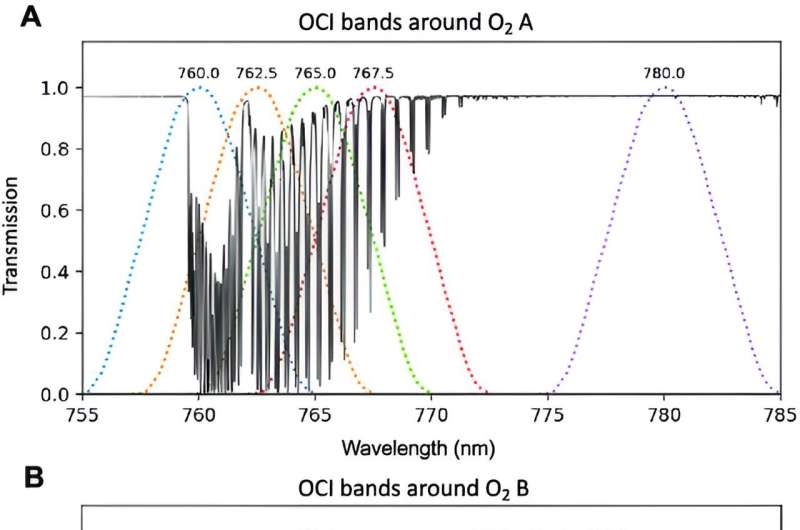This article has been reviewed according to Science X's editorial process and policies. Editors have highlighted the following attributes while ensuring the content's credibility:
fact-checked
proofread
Unlocking oceanic mysteries: Satellites shed light on aerosol layer height

Aerosol layer height (ALH) is a key parameter for assessing aerosol impacts on weather, climate, and atmospheric correction. Accurate ALH retrieval improves the understanding of aerosol-cloud interactions and aids in surface air quality monitoring.
However, conventional remote sensing techniques often struggle with ALH determination over the oceans due to the complexities of aerosol vertical distribution and optical properties. These challenges necessitate the development of advanced instruments and methods capable of reliably measuring ALH, which are crucial for refining climate models and improving atmospheric corrections.
Conducted by researchers from the University of Maryland and the University of Iowa, the study was published in the Journal of Remote Sensing on July 23, 2024. It evaluates the capability of NASA's PACE satellite, launched in early 2024, to measure ALH using the Ocean Color Instrument (OCI). The study focuses on analyzing OCI's sensitivity to the oxygen A and B bands, validating the findings with proxy data from TROPOMI.
The study employed OCI on NASA's PACE satellite to retrieve ALH using the oxygen A and B absorption bands. Researchers conducted radiative transfer simulations to assess these bands' sensitivity to vertical aerosol profiles, focusing on smoke and dust events.
The 762.5 nm band in the oxygen A band and the 690 nm band in the oxygen B band were identified as the most sensitive to ALH changes, making them key channels for retrieval. Validation with TROPOMI proxy data showed strong alignment with CALIOP lidar measurements, with errors of 0.49 km for smoke and 0.31 km for dust, demonstrating that OCI can effectively retrieve ALH with precise uncertainty levels, enhancing aerosol monitoring over oceans.
"This research highlights OCI's potential to accurately measure aerosol layer heights, improving atmospheric correction and enhancing our understanding of aerosol behavior," said Dr. Xiaoguang Xu, lead author of the study. "The oxygen absorption bands provide valuable data that can refine our approach to monitoring aerosol dynamics."
Accurate retrieval of aerosol layer height from OCI observations can significantly benefit climate research, atmospheric corrections, and aerosol monitoring. The methods developed offer a solid basis for future aerosol retrieval algorithms, enhancing data quality for scientific research and environmental management.
More information: Xiaoguang Xu et al, Potential of NASA's Plankton, Aerosol, Cloud, and Ocean Ecosystem (PACE) Satellite Observations in the Oxygen Bands for Determining Aerosol Layer Height over Ocean, Journal of Remote Sensing (2024). DOI: 10.34133/remotesensing.0167
Provided by TranSpread




















